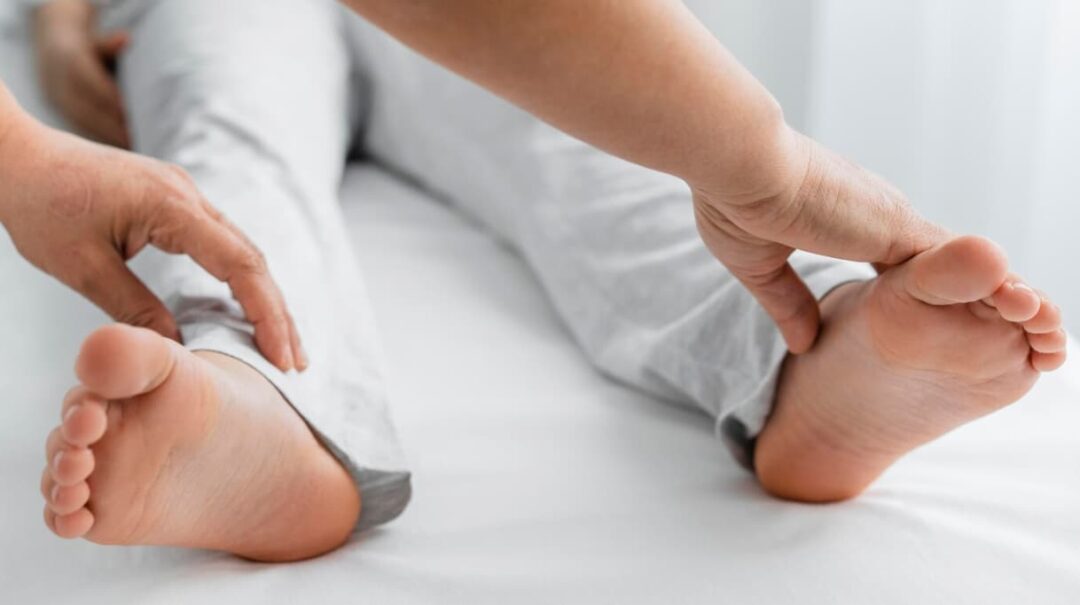Peripheral Neuropathy for Long-Term Disability Benefits
Being diagnosed with peripheral neuropathy, a condition characterized by nerve damage, could potentially make you eligible for long-term disability benefits. Nevertheless, navigating the process to secure these benefits can be intricate, given the strict criteria imposed by insurance providers.
In the event that your disability claim is rejected, even with a confirmed diagnosis of peripheral neuropathy, it’s important to contest this outcome. Enlisting the help of a legal advisor who specializes in disability rights can be highly advantageous. They are equipped to dissect the basis for the denial of your claim, enlighten you regarding your legal rights, and craft an approach to effectively challenge and reverse the denial. As we delve into the intricacies of understanding neuropathy, it’s crucial to explore avenues such as the long-term disability appeal process successfully, ensuring individuals grappling with neuropathy receive the support they need.
The Causes of Peripheral Neuropathy
Peripheral nerves serve as the vital communication link, enabling your body to transmit and receive messages. Damage to these nerves can stem from diverse sources, including health issues, medication usage, or physical trauma. Causes of peripheral neuropathy encompass conditions such as diabetes, autoimmune diseases (Guillain-Barre syndrome, rheumatoid arthritis, vasculitis, Sjogren’s syndrome), infectious diseases (HIV, Lyme disease, hepatitis B and C, shingles, diphtheria), bone marrow disorders, liver disease, inherited disorders, specific medications (especially chemotherapy), alcoholism, physical trauma, repetitive stress injuries, exposure to harmful substances and toxins, and vitamin deficiencies.
While some cases have identifiable causes, others remain mysterious. Nonetheless, the reported symptoms can significantly disrupt daily functioning or hinder the performance of routine activities.
Some of the many causes of peripheral neuropathy can include:
- Diabetes;
- Autoimmune diseases such as Guillain-Barre syndrome, rheumatoid arthritis, vasculitis, and Sjogren’s syndrome;
- Infectious diseases such as HIV, Lyme disease, hepatitis B and C, shingles, diphtheria;
- Bone marrow disorders;
- Liver disease;
- Inherited disorders;
- Specific medications, notably chemotherapy;
- Alcoholism;
- Physical trauma or injuries;
- Repetitive stress injuries;
- Exposure to harmful substances and toxins;
- Vitamin deficiencies.
There are instances where the cause of peripheral neuropathy remains unknown. Nevertheless, the reported symptoms can severely impair daily functioning or prevent the person from performing daily activities.
The Debilitating Symptoms of Peripheral Neuropathy

The signs of peripheral neuropathy vary in intensity and may emerge suddenly or gradually. These signs are often linked to the specific nerve types impacted.
When sensory nerves are affected, individuals may experience hypersensitivity to touch, intense burning or sharp pain, lack of feeling, and an inability to detect temperature shifts. Symptoms of motor nerve damage include weakened reflexes, involuntary muscle movements, challenges in handling objects, frequent stumbling, problems with coordinating movements, muscle weakness, and in extreme cases, partial or full paralysis.
If autonomic nerves are compromised, symptoms may include breathing or swallowing difficulties, loss of control over bladder or bowel functions, digestive issues, and a sudden decrease in blood pressure leading to faintness or dizziness. Persistent presence of these symptoms can hinder a person’s ability to work. Additionally, the numbness associated with peripheral neuropathy might result in unnoticed wounds or injuries, raising the risk of infections and, in critical situations, the possibility of limb amputations.
Diagnosis and Treatment of Peripheral Neuropathy
When unexplained symptoms start appearing, most individuals typically turn to medical professionals for advice. The initial step taken by doctors usually involves a thorough physical and neurological assessment, which may be followed by various diagnostic procedures like EEG (electroencephalography), EMG (electromyography), and NCV (nerve conduction velocity) tests. Based on the specific symptoms, additional tests like blood analyses, CAT scans, MRIs, and spinal fluid examinations may also be recommended.
In cases where a root cause for peripheral neuropathy is detected, such as diabetes or an infection, the doctor’s strategy will center on addressing this primary issue. Addressing the underlying condition may aid in slowing down or, in certain instances, even reversing the progression of peripheral neuropathy. Nonetheless, if this condition remains unaddressed over an extended time, it can lead to irreversible nerve damage.
Filing for Long-Term Disability for Peripheral Neuropathy
When applying for long-term disability benefits, the insurance company assesses your claim based on the intensity of your peripheral neuropathy and any related health issues. The impact of your condition on your capacity to fulfill your job responsibilities is a key factor in determining eligibility.
It’s essential to present detailed medical documentation that outlines the intensity of your symptoms and their impact on both everyday activities and specific job-related tasks. For example, if your occupation involves handling manual tools, peripheral neuropathy could hamper your ability to grip and manipulate objects, thereby hindering your work performance.
How A Qualified Long-Term Disability Attorney Can Help You
Navigating the process of securing long-term disability benefits for peripheral neuropathy can be challenging. The insurance company will meticulously review your medical history, searching for any indication that you might still be able to engage in some form of employment, even if it’s sedentary.
Engaging an experienced long-term disability lawyer can significantly bolster your case for benefits. Working with a lawyer familiar with such cases enhances your chances of successfully obtaining long-term disability benefits.
Doctors’ Support in Peripheral Neuropathy Disability Claims
The involvement of your healthcare providers is vital in the pursuit of long-term disability benefits. Detailed medical reports from your doctors are key in proving the severity and impact of your disability. Simply listing symptoms is insufficient; you must also show how these symptoms interfere with your everyday life and job functions.
Living and Coping with Peripheral Neuropathy

Alt: hands grasping a foot, implying a check for tenderness or pain.
Living with peripheral neuropathy can be challenging, as it affects various aspects of everyday life. Understanding the condition and learning how to manage symptoms can significantly improve the quality of life. From maintaining a healthy lifestyle to using prescribed medications and therapies, coping strategies can help to manage pain, prevent further health issues, and enhance the overall functioning.
Conclusion
Peripheral neuropathy, though a challenging condition, can entitle a diagnosed individual to long-term disability benefits. However, navigating the claim process can be difficult and time-consuming. But with the right medical evidence and legal assistance, one can build a solid case and increase the chances of approval. Despite the hurdles, it’s important to remember that help is available and that no one needs to tackle this debilitating condition alone.
The journey to qualify for long-term disability benefits due to peripheral neuropathy can be an arduous one. However, with appropriate medical documentation, a detailed understanding of your symptoms, and the right legal representation, you can significantly raise the odds of approval. It’s vital to remember that despite the challenges, there are resources and professionals out there who can assist you in this process. Acknowledge your situation, equip yourself with the right tools, and take constructive action towards a more manageable life with peripheral neuropathy.



